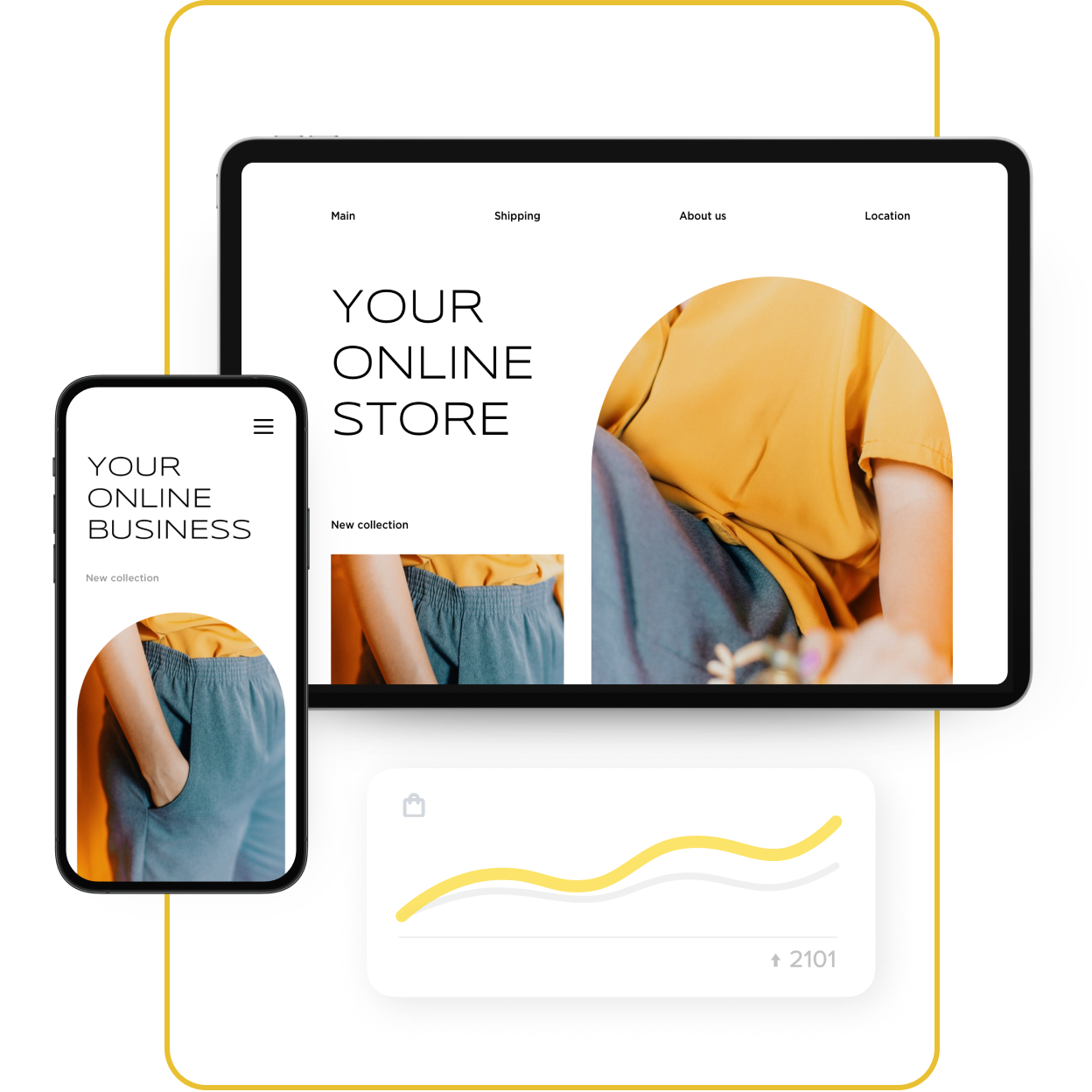In the online business landscape, a logo is one of the most critical assets of the brand. Logos are small but mighty. As consumers, we interact with them daily, often without even realizing it.
Whether you’re in the design phase of creating a logo, going through a brand refresh, or simply curious about what a logo represents, this post covers it all.
First and foremost, the primary purpose of a logo is identity. A
Logos can be basic text, a simple image, or much more abstract
Compelling examples of logo apparel include Nike, Louis Vuitton, or The North Face — the brand and the quality of the merchandise are premium, so consumers happily pay to wear their goods. Each of these companies has a clean, uncomplicated logo that is recognized by the masses.
So, what makes a successful logo? Ultimately, you want your logo to represent what your business stands for accurately.
Further, your logo should resonate with your audience and inspire them to connect with your brand. This could include following your social media profiles, purchasing in your ecommerce store, subscribing to a newsletter, or everything all at once.
Overall, a powerful logo can help pave the way to lifelong customer loyalty.
Tips for Creating a Strong Logo: Conceptualization
As you brainstorm your logo, you may wonder, “What makes a good logo design?” so we’re here to tell you! Keep the following components in mind throughout the conceptualization process.
Simplicity is key
In design, overcomplicating visual elements is a big
Think about the McDonald’s or
Make it memorable
In the same vein as simplicity, your logo should also be unique and memorable in its own way. The way consumers connect with a design is truly what makes a logo good, so keep this in mind during conceptualization. This can include using attractive colors or fonts and the positioning of the logo or the symbol itself.
Offer versatility
Your logo should be visually appealing on both a postage stamp and a massive Times Square billboard. Many designers create a logo in black and white first to perfect the design and then add color after the concept is finalized.
Keep the audience in mind
Ultimately, a logo is designed to inspire and connect with a brand’s target audience. Whether you’re targeting sports lovers, children, or
Creating a Logo: Design Basics
Once your concept is locked in, it’s time to start creating your logo. Keep the following in mind throughout the design process.
Color
Generally, a logo should consist of one to two colors. Most logo designers choose two colors near each other on the color wheel to create a cohesive, harmonious feel.
For a more contrasted design, selecting two opposite colors (i.e., black and white) is a viable option. This strategy makes a logo more flashy and
Typography
Be sure to select a font style that is both visually appealing and legible. You can have the coolest logo in the business, but if consumers can’t read what it says, your design will fall flat in the long run.
Typically, bold,
White space
As much as a logo needs color to captivate an audience, it also needs white space for balance. White space prevents your logo from feeling overcomplicated or busy.
Symmetry
Creating a
Contrast
Using contrast in design creates an additional layer of visual interest for the viewer. Whether you layer shapes or lines, use opposite color schemes or various icons, contrast ensures visual appeal no matter where your logo is used.
FAQ: Logo Design
How can I start designing a logo?
Logo design begins with knowing your brand identity, style, and target audience. You’ll need to map out the concept of your logo based on your brand, audience, and what you offer. Then, select a color scheme, fonts, and other design elements.
Why are logos important for a business?
At its foundation, a logo serves to identify a business simply. In reality, a strong logo can do so much more. A compelling logo can grab people’s attention, differentiate your brand from the competition, and shape your brand identity as a whole. As your brand grows online, the logo will become the element consumers recognize.
Build a Brand You’re Proud of with Ecwid
Now that you know what makes a good business logo, you’re on your way to becoming a successful brand. In the ecommerce space, brand recognition is everything. Your logo can be used on your website, social media profiles, print materials, and the products
Ecwid is here to help entrepreneurs and business owners sell their products anywhere — from websites to social media and online marketplaces. Get started today and watch your business grow and thrive.
- What Is Branding: The Ultimate Guide
- Brand Identity: Your Guide to Captivating Hearts and Minds
- Elevating Your Brand Without Breaking the Bank
- How To Create An Awesome Logo For Your Brand
- How to Come Up with Logo Ideas
- What Makes a Good Logo
- How Much are Logo Designs
- How to Trademark a Name and Logo
- Business Names Ideas: How to Choose the Best Store Name
- How to Build a Brand: A Playbook for Small Ecommerce Businesses
- How to Create a Strong Value Proposition for Your Online Store
- Mastering the Art of Product Presentation








